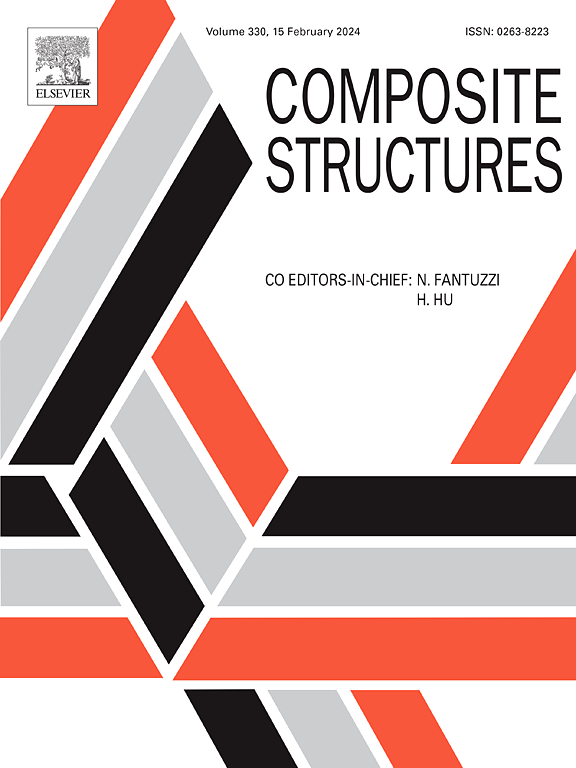Fatigue response and fracture mechanisms of polymer matrix composites under dominance of the self-heating effect
IF 6.3
2区 材料科学
Q1 MATERIALS SCIENCE, COMPOSITES
引用次数: 0
Abstract
The self-heating effect in polymer matrix composites (PMCs) can be dangerous due to dominance of the fatigue process and its significant acceleration. Therefore, investigation of its influence on structural behavior and thermomechanical response is crucial for safe and reliable operation of PMCs. Due to lack of standardization of criteria of determination of fatigue properties, such as fatigue limit, during various modes of fatigue loading, the investigation of fatigue response attracts special attention. In some loading scenarios when the process is dominated either by mechanical fatigue degradation or self-heating effect, the classical approaches to determine fatigue limit may fail. This implies the need to establish new criteria for fatigue limit determination, also considering stress relaxation. In this study, the authors demonstrated that fatigue behavior is represented by bi-linear S-N curve, which reveals different thermomechanical responses and damage mechanisms under specific loading conditions. Moreover, it was demonstrated the existence of a transition point on the intersection of these S-N curves, where dominance of self-heating effect and mechanical degradation was clearly noticeable. The fatigue process for both mentioned regimes was characterized in terms of self-heating temperature evolution and acoustic emission, which was validated by microscopic analysis and X-ray computed tomography after fatigue failure.
自热作用下聚合物基复合材料的疲劳响应及断裂机制
在聚合物基复合材料(pmc)中,由于疲劳过程的主导地位及其显著的加速,自热效应可能是危险的。因此,研究其对pmc结构性能和热力学响应的影响对其安全可靠运行至关重要。由于在各种疲劳加载模式下疲劳特性(如疲劳极限)的确定标准缺乏标准化,因此对疲劳响应的研究受到了特别的关注。在机械疲劳退化或自热效应主导的加载过程中,经典的疲劳极限确定方法可能失效。这意味着需要建立新的疲劳极限确定标准,也考虑到应力松弛。在本研究中,作者证明了疲劳行为以双线性S-N曲线表示,该曲线揭示了特定加载条件下不同的热力学响应和损伤机制。此外,在这些S-N曲线的交叉点上存在一个过渡点,在那里,自热效应和机械退化明显占主导地位。通过微观分析和疲劳失效后的x射线计算机断层扫描,对两种状态的疲劳过程进行了表征,包括自热温度演变和声发射。
本文章由计算机程序翻译,如有差异,请以英文原文为准。
求助全文
约1分钟内获得全文
求助全文
来源期刊

Composite Structures
工程技术-材料科学:复合
CiteScore
12.00
自引率
12.70%
发文量
1246
审稿时长
78 days
期刊介绍:
The past few decades have seen outstanding advances in the use of composite materials in structural applications. There can be little doubt that, within engineering circles, composites have revolutionised traditional design concepts and made possible an unparalleled range of new and exciting possibilities as viable materials for construction. Composite Structures, an International Journal, disseminates knowledge between users, manufacturers, designers and researchers involved in structures or structural components manufactured using composite materials.
The journal publishes papers which contribute to knowledge in the use of composite materials in engineering structures. Papers deal with design, research and development studies, experimental investigations, theoretical analysis and fabrication techniques relevant to the application of composites in load-bearing components for assemblies, ranging from individual components such as plates and shells to complete composite structures.
 求助内容:
求助内容: 应助结果提醒方式:
应助结果提醒方式:


